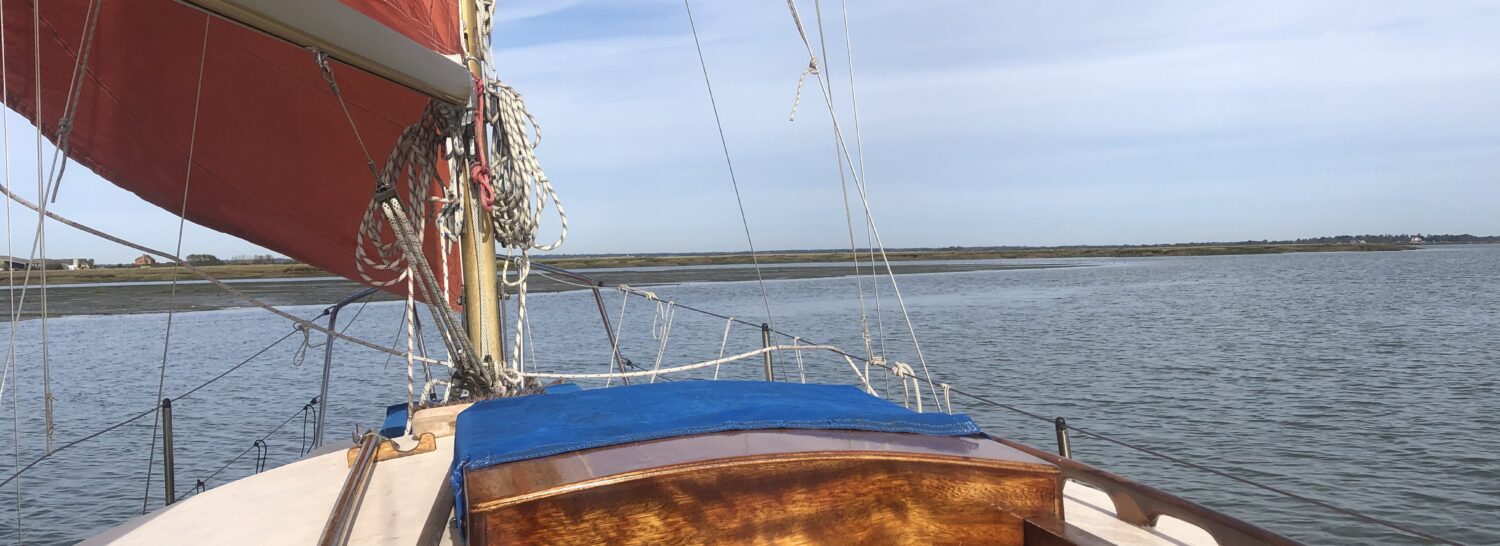Not many people know much about the history of the Coastguard. It was formed in 1822 by the amalgamation of three services set up to prevent smuggling. Often the individual services were acting against one another in effect assisting the smuggling gangs.
As boaters, we are all mostly aware of the presence of the Coastguard at various times, listening to the forecasts, perhaps seeing their cutters in the distance and the rather smaller RIB type vessels closer up. Marinas are often used for mooring…
Since the 1820 professionalisation the service has been saving lives along the UK coast and at sea, as well as coordinating rescues for those in distress in international waters.
With the advent of the telephone a 999 emergency system came into being in 1937. A caller had only to call the operator and ask for whatever service needed or just state the emergency and operator directed…

However, public knowledge has been on the wain so back in 2018 a campaign was launched, based around a seaside cartoon type postcard couple…
See:
Clearly, the lack of awareness has continued to spiral downwards. It has been said that around 50% of people living in the UK don not understand this system or service, or even have any knowledge of it.
For seafarers this is a damning as it could mean literally life or death…
Now, I have been one who ’caused’ a call to be made, but it was made by a person who didn’t understand what we were doing. I had sailed Whimbrel onto a bank. It being shallow, jumped overboard to push boat’s bow round – I succeeded, but the tide still left us high and dry. A lady ashore (On Mistley Quay) called the Police/Coastguard – a life boat pitched up…
Told about in an article published by Yachting Monthly and retold in full in my forthcoming new book…
We were not in any danger.
The coastguard duty officer in discussion with my good mate (a local sailor himself and professed to grounding more than once) gave some excellent advice: If you go aground and are not in danger, let the Coastguard know so that if reports come in they can stop unwanted dispatch of emergency services…
They had this conversation at around 0100 the following morning as we reported floating and clearing away…
But the 50% figure has caused and a new website has been launched to promote awareness of the 999 service.
See:
When the Maritime and Coastguard Agency slimmed down its shore stations in a fit of modernisation with a centralised centre ‘somewhere in Hampshire’ from where experts , we are assured, will know a dinky little creek off a tidal waterway anywhere … many of the old CG Stations were taken over by an organisation called the National Coastwatch Institution. Many ex MCA staff transferred upon retirement – it is a volunteer organisation.
A branch opened at Holehaven – a singularly dire choice where other than big ships travelling by, little happened! They talked there way into hiring a chunk of the Island Yacht Club hardstanding, out on its south-eastern corner. A much more appropriate spot to gaze over the areas used by the general public.

The display I saw at my local library appears to be in conjunction with the new MCA initiative.

Like may organisations, the National Coastwatch are after your sevices!
So, if interested, look them up in your area and there may well be a local station.

Now this leads me onto the helping hand that has, by tradition, been freely given by one seafarer to another, for generations – the lore of the sea…
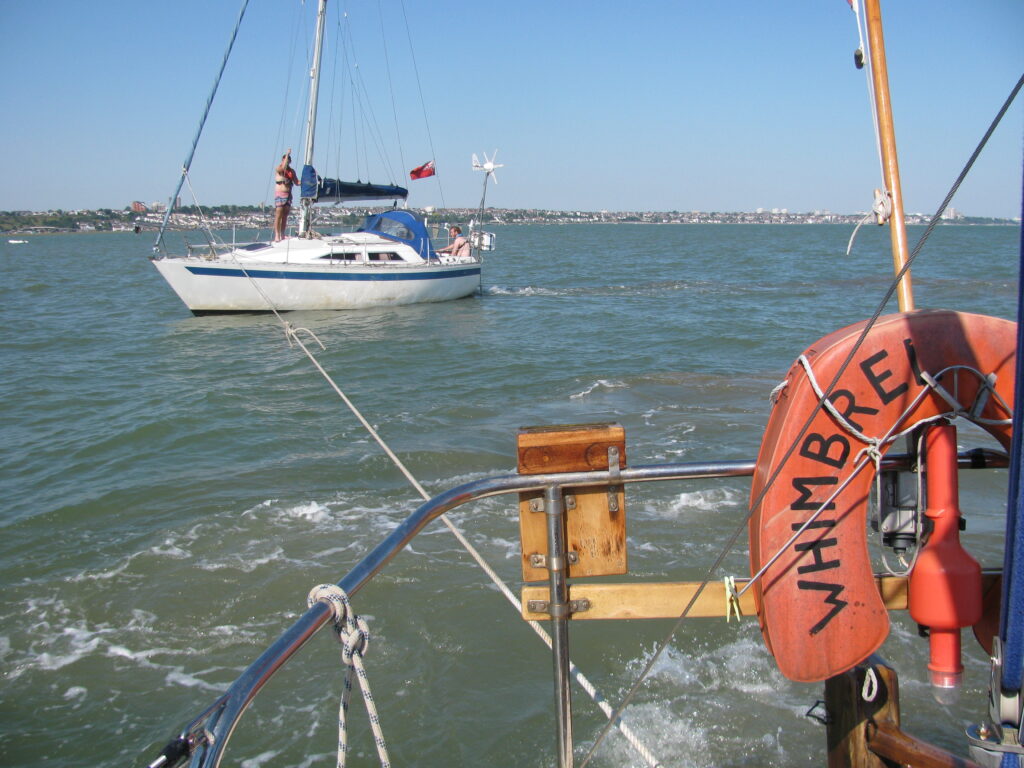
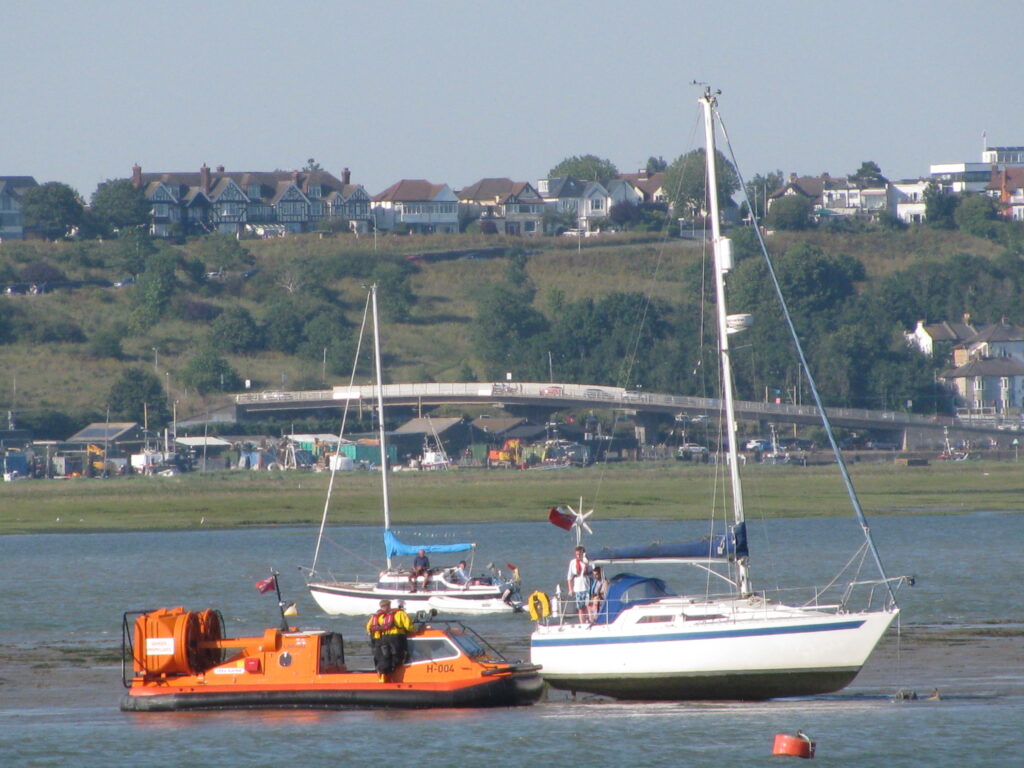
The above attempt to tow a ‘stricken’ vessel was made in 2020 during the Covid spring, when sailing was granted. The tow rope was my quickly joined mooring warps – dropped by our club workboat when they arrived to try and help. I never got the warps back from the Benfleet YC boat – it is told about in forthcoming book!
Sailing alone on a fine day with a good sailing breeze I was gazing at a little cabin cruiser going along when her mast folded at the hounds and collapsed.
There were many powered craft zipping about and a fair spread of sailing vessels. Other than myself, NOT a single one took any notice!
I sailed over to ask if they were okay and if their prop was clear. With their assurances, I left them puttering back towards leigh – all told about in my forthcoming book.
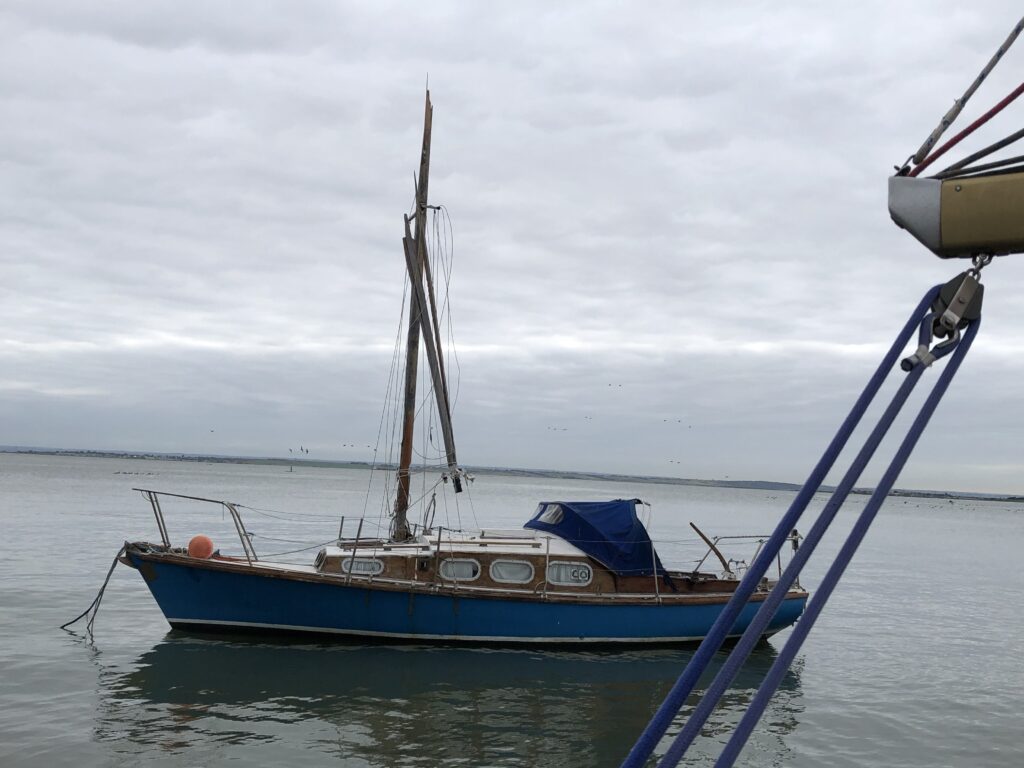
Now, recently, I heard, a vessel from my own club had run aground on a mud bank in Hadleigh Ray. They were returning to the Island YC after being ashore elsewhere. The bank, Bird Island, sits in the Ray Channel abreast of Two Tree Island and Marks Marsh Island.
I named it years ago and it was taken up be a chap at the Benfleet YC who surveyed the waterway from Benfleet YC to the Leigh Buoy – see BYC web site. I also produced a chartlet years beforehand marking where the buoys sit in relation to creek banks/gut way. It remains on the Island YC web site.
I have been monitoring the growth of this island fro a couple of decades and wrote to the PLA about it. The PLA denied its existence, but would look when next survey carried out!
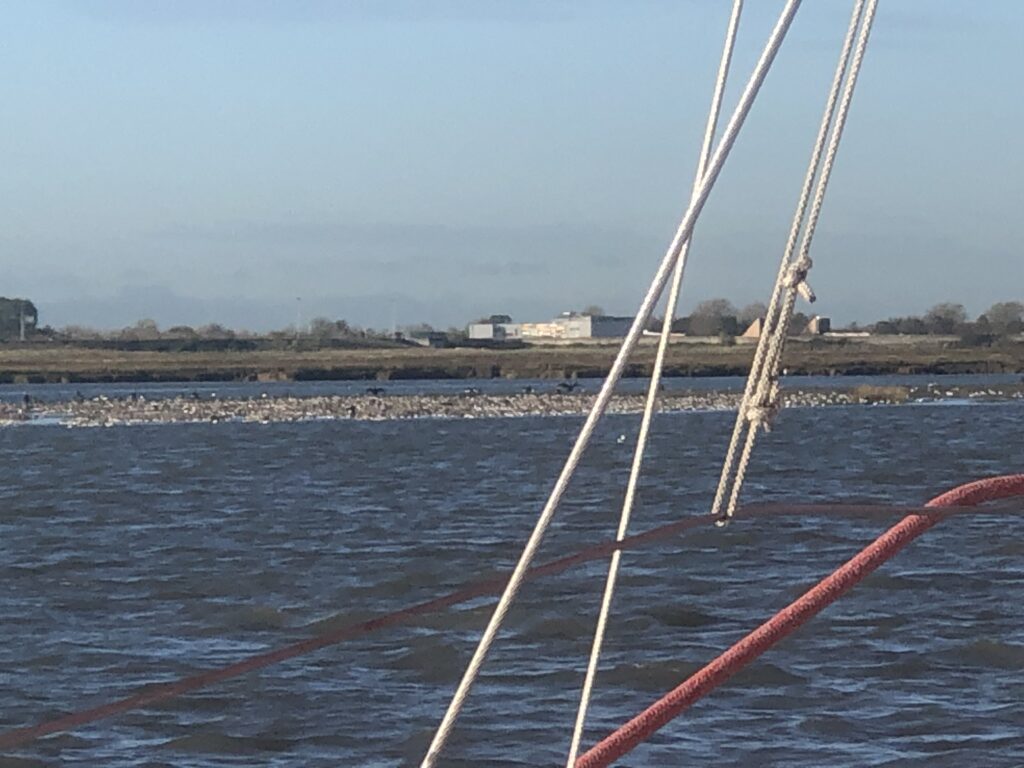
Note: clump of cord grass to rhs.
I have sailed regularly up towards the BYC for decades and eventually ‘mapped’ the route from the seawall. There is a dished and fairly deep swatch to the north of Bird Island and Two Tree Island which is wide enough to tack through. The deeper and narrow channel runs to the south with hard steep banks.
The boat that grounded, fortunately ‘fell’ the right way, otherwise she’d likely to have suffered sinkage. The crew were taken off by the RNLI. A boat from the Island YC went out and plucked her off that night. Self-help at work.
Self-help does not appear to be the norm now though: I heard from a sailing friend about his problems with a folding propeller – leaving his mooring he found to his horror that the prop was thrashing about beneath the water not doing a lot!
‘I was drifting sideways up the creek…’ he said, ‘and called to people ashore at the Island to fetch a dinghy…’ The blokes stood and watched, doing nothing…
It was a passing kayaker who turned and sped up-stream to fetch out the boatyard boatman … my friend was taken in hand, lifted, sticky prop freed and greased and sent back on his way. Probably cost him, but help could have come from closer to home.
But I was dumbfounded by the lack of help from my own club members.
Shame on them!
It wasn’t a RNLI or Coastguard situation, just a simple within creek incident that was ignored by ignorance and a ‘don’t care attitude’ which I find extremely sad.
